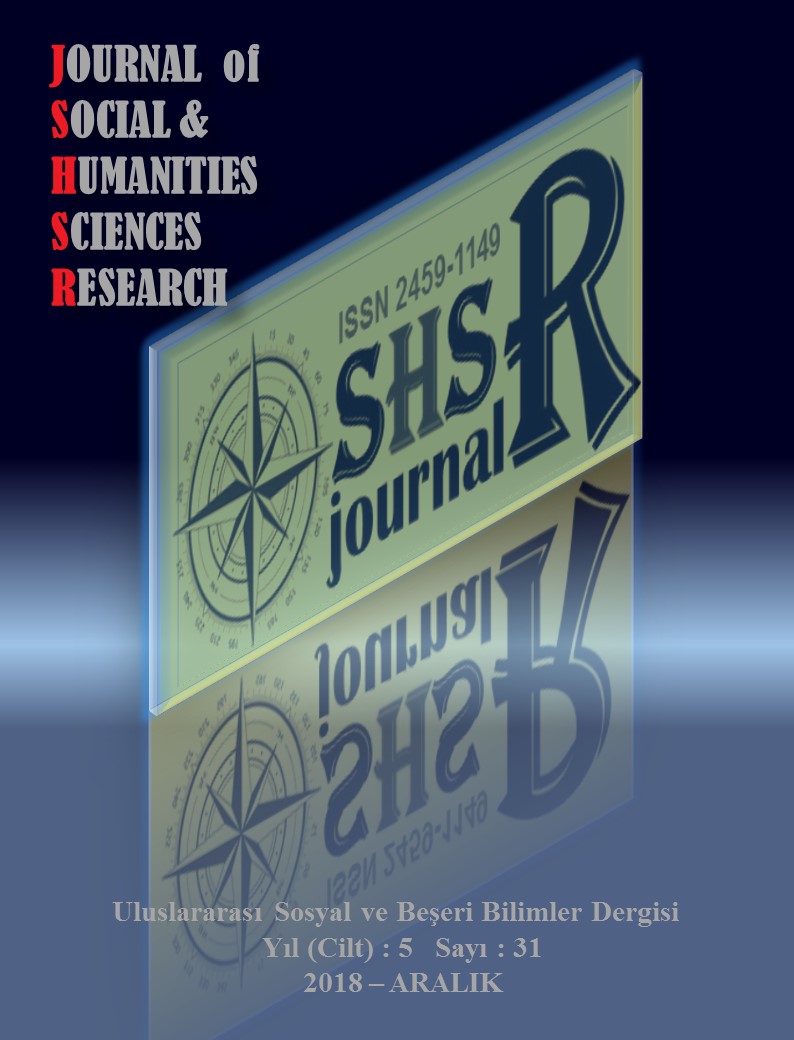BETWEEN TWO LAWS, IN THE LIMBO: INFORMAL MARRIAGES OF SYRIAN REFUGEE WOMEN AND THE CRISIS OF (NOT BE ABLE TO) DIVORCE
DOI:
https://doi.org/10.26450/jshsr.843Keywords:
Migration, Syrian Women Refugees, Family, Divorce, Not-be-able-to Divorce CrisisAbstract
The international migration that has started because of the conflicts in the Middle East led more than 3.5 million Syrians to come to Turkey. Mainly women, many social groups such as children, young people, elderly and disabled people, etc. are deeply affected by the migration process. The migration also forms the basis for the development of the relations between the local community and Syrian migrants at different levels. In this context, marriage is a form of social relationship between two communities which is carried out with different dynamics. It is observed that refugee women prefer marriage with men in Turkey as a life strategy in terms of clutching onto life and preventing the negative effects of the migration process. But the differences arising from the legal and social structure of the two countries, the aims of those who choose to marry, the acceptance and conflict processes in the marriage process bring about many problems. One of these problems is to divorce/not be able to divorce crisis observed in the border provinces. Syrian refugee women often marry indigenous men in religious marriages, in a customary way without legal guarantees. However, the reasons such as incompatibility, inter-family problems, violence, deceit, etc. disrupt the family unity; the divorce becomes a serious problem in these marriages which are performed in secret, and even the crises can be called not-be-able-to-divorce may develop.
This study deal with informal marriages between the Syrian refugee women in Turkey and the men in hosting community and the crises in the divorce processes developing later on. While the studies regarding female refugees in Turkey are generally about the subjects such as marriage, domestic violence, early marriage, etc., the characteristic of this study is focusing on the informal marriage and divorce processes. The qualitative method was used in the study, interview and case study were preferred as the data collection technique. In this context, how the social and legal dilemmas in the divorce process affect the lives of the Syrian refugees, the problems of custody, compensation, alimony, how refugee women are positioned in terms of their gender roles, which strategies and problem-solving mechanisms related to the not-be-able-to divorce crisis in the Syrian community are discussed. According to the research findings, it was determined that refugee women inclined to marriage with natives in order to receive social and economic support, to avoid the risks of alienation, introversion, ostracism, and marginalization. The difference between the legal and socio-cultural norms of two countries plays a fundamental role in the crisis of marriage processes, so the divorces are experienced. Among the reasons of the divorce crisis, it was understood that there are lots of factors such as that the demand for bride price, independent houses, support for the family and children, various needs and expectation of the women who married as a second wife through a religious marriage are not met, the conflicts between co-wives and violence. In divorce proceedings, while the rights such as guardianship, alimony become important problems between the spouses, in some cases, children are taken forcibly from their mothers, and in some cases, the financial difficulties due to lack of any alimony are observed as the serious problems. During these relationships in which the family institution is torn to pieces, the Syrian refugee women are exposed to experiences such as stigmatization, ostracism, and poverty, as well as domestic violence.
Downloads
Published
How to Cite
Issue
Section
License
Copyright (c) 2018 INTERNATIONAL JOURNAL OF SOCIAL HUMANITIES SCIENCES RESEARCH

This work is licensed under a Creative Commons Attribution 4.0 International License.


